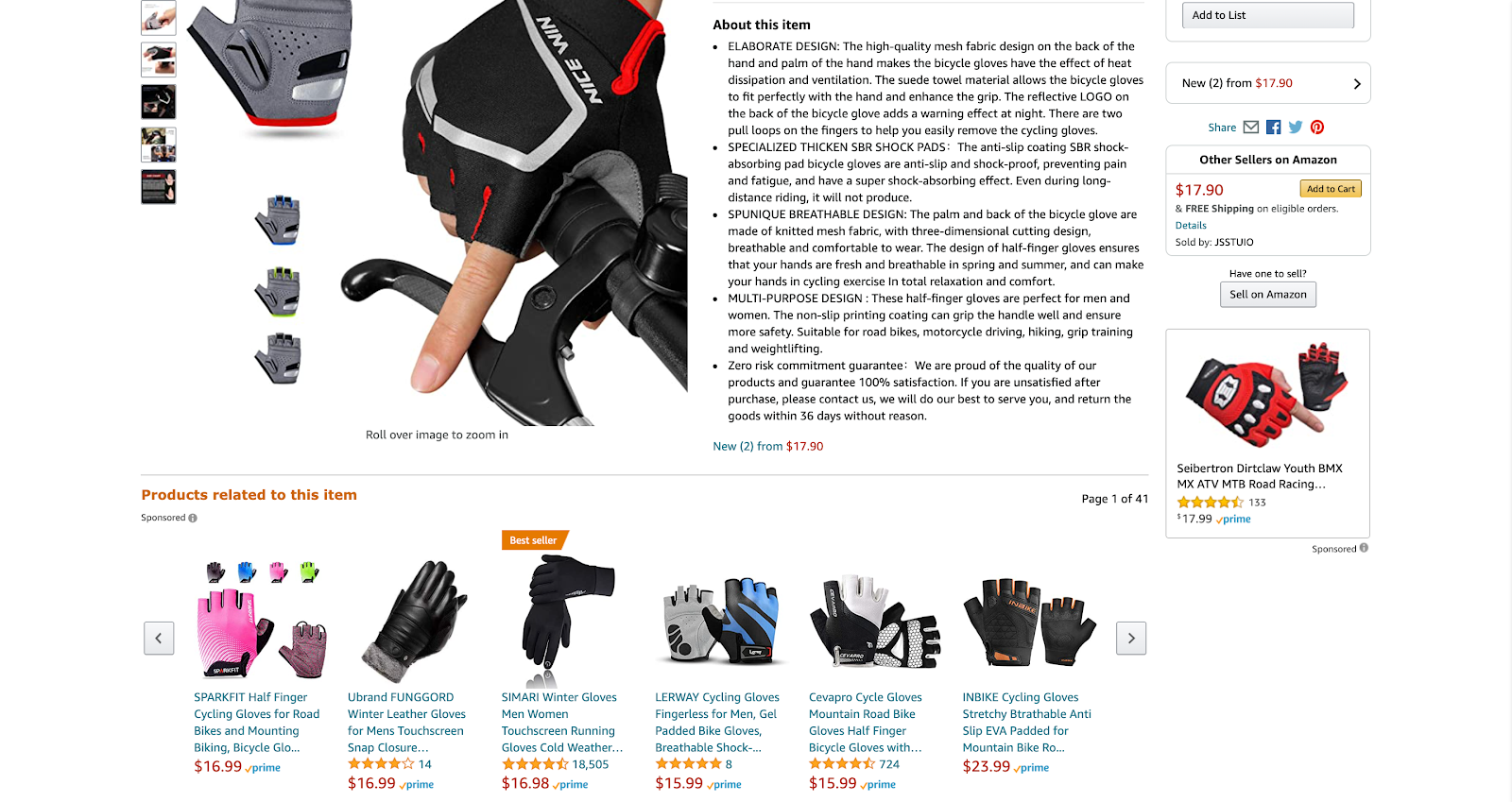Retail Pricing Strategy for Ecommerce Stores
One of the keys to a successful business is selling at the right price. If your products are inexpensive, you may rake in more sales but have a hard time turning a profit. And if your products are too pricey, consumers will turn to other retailers, and you’ll lose your market share.
But if you’re a small business owner, don’t fall prey to the misconception that price alone drives sales.
When it comes to a retailer’s pricing strategy, there isn’t one surefire approach that fits all. You need to perform a product pricing balancing act that considers business and production costs, consumer trends, revenue goals, competitor pricing, and even a little psychology.
In this article, you’ll learn about:
- What retail pricing is.
- What kinds of retailer pricing strategies you can use.
- How to choose the right retail pricing strategy.
What Is Retail Pricing?
The retail price is the final amount consumers pay to purchase an item.
To make a profit, the retail price you set for a product must include the cost of goods for you, plus an additional markup to make a profit.
As an online retailer, you can take numerous approaches to pricing products or services. The right strategy for you will depend on your short and long-term business goals.
Here’s the good news.
We’re about to explore 10 approaches, so you can pick the retail pricing strategy that will work best for you.
Pricing Strategy Examples
- Manufacturer Suggested Retail Price (MSRP)
- Keystone Pricing
- Markup Pricing
- Discount Pricing
- Bundle Pricing
- Penetration Pricing
- Psychological Pricing
- Premium Pricing
- Competitive Pricing
- Dynamic Pricing
1. Manufacturer Suggested Retail Price (MSRP)
If you sell mass-produced items such as consumer electronics and household appliances, the Manufacturer Suggested Retail Price (MSRP) is a good pricing strategy to adopt.
MSRP is a standard price for an item, regardless of who is selling it. It takes the guesswork out of setting prices, but it can dull your competitive edge when your product sells at the same price as other retailers.
2. Keystone Pricing
Keystone pricing is a type of markup pricing. With this strategy, you double each product’s wholesale price to create a healthy profit margin.
With a fixed percentage, your calculations will be simple. Maybe too simple — it’s easy to end up pricing products too low and too high.
Keystone pricing isn’t a good option if you offer highly unique products or custom items that take a long time to create because you won’t make enough profit.
It’s just as poor a pricing strategy if you sell standardized, common products. Depending on the availability and demand for an item, it might be unreasonable for a retailer to mark up items at such a high rate.
3. Markup Pricing
Markup pricing (also called cost-plus pricing) is the most common and intuitive pricing strategy for retailers. You add a percentage of the base cost of individual items to create a profit — but you apply a different markup depending on the product.
When selling a high volume of products or seasonal and perishable items that need to be sold quickly, it’s best to set the markup below 100%.
When selling custom products or privately labeled items like cosmetics, jewelry, alcohol, or electronics, you can set the markup above 100%.
It is straightforward in theory, but markup pricing requires you to spend extra time evaluating factors such as perceived customer value and competitor pricing.
4. Discount Pricing
When retailers mark down their products’ prices to encourage sales, it’s called discount pricing.
One form of discount pricing is the high-low pricing strategy: Products are introduced at a high price point and marked down when demand decreases.
Electronics retailers use this strategy most often. Computers, game consoles, and smartphones are the most expensive when they’re first released. But when the next model comes out, the previous versions are sold at low prices.
Discount pricing is an effective strategy if you want to clear unsold inventory and increase sales. But if you become known for discounting your products, customers may perceive them as low quality or grow accustomed to waiting for the lower price.
5. Penetration Pricing
Penetration pricing is another form of discount pricing. A business offers its new product or service at a lower price to attract customers. The idea is to get consumers hooked with a sale price, so they are willing to pay full price after the promotional period expires.
The penetration pricing strategy works best for subscription products, especially in a competitive market.
Businesses that use this pricing model include:
Similar to penetration pricing is the loss-leader pricing strategy, in which products are sold at a loss just to get customers in the door.
6. Bundle Pricing
Bundle pricing is another discount pricing strategy. It’s useful if you sell related items you can package together. Bundling items lets you curate the customer experience and empowers you to increase sales volumes through up-sells or cross-sells.
Common examples of bundle pricing are Christmas baskets or deli bundles that include preselected wines, cheeses, and meats.
Similar to bundle pricing, multiple pricing sets products at a lower price when more than one is purchased. For example, “buy one, get one free,” or “buy two, get 20% off.”
This strategy works best when you bundle less popular items with your high-demand products. Sales are hard to resist, especially if the customer is buying something they already want. You can simultaneously attract customers and get slow-moving items out the door.
7. Psychological Pricing
Psychological pricing is a value-based pricing strategy. Also known as charm pricing, it depends on the customer’s perceived value of the item.
According to researchers at Carnegie Mellon, people experience pain when they spend money. It’s up to merchants to minimize that pain.
You see psychological pricing almost every day when retailers give products a price that ends in an odd number.
For instance, instead of charging $6, retailers price a product at $5.99. The brain sees $5 and the consumer is tricked into perceiving a lower price.
Psychological pricing is best applied to non-essentials, as it encourages customers to spend impulsively.
8. Premium Pricing
Premium pricing (also known as prestige pricing or luxury pricing) is another value-based pricing strategy. High-end retailers sell their products at an additional markup that gives their customers the sensation of status.
Premium pricing works best when your product quality and customer service can match the expensive price tag. It also depends heavily on successfully marketing your brand as high-end.
It’s how Gucci sells their $1,200 Lady Lock bags. Other companies that use premium pricing include:
As an online retailer, it may be difficult to replicate the luxurious feeling these companies have spent decades cultivating. However, you can validate your premium pricing with a chic design aesthetic, high-quality products, and a stellar customer experience — which includes a fast-loading website.
9. Competitive Pricing
Competitive pricing entails consciously setting lower prices to gain a competitive advantage. It works best if you’re in an industry with similar products, where your competitors’ prices are the only differentiator.
The competitive pricing strategy is most effective if you’re a larger retailer and can negotiate a lower wholesale price from suppliers so you can still earn a decent profit. However, small retailers can be driven out of business in a price war.
10. Dynamic Pricing
Dynamic pricing is a retailers pricing strategy where you adjust your prices according to changes in supply and demand.
Ecommerce businesses are in the best position to use dynamic pricing because it can be done in real-time. When you sell online, you can leverage technology and data to sell the same product at different prices depending on the purchaser.
The dynamic pricing strategy requires software, data, and manpower. WooCommerce plugins can help you price products optimally on your WordPress website.
Final Thoughts: Retail Pricing Strategy for Ecommerce Stores
When deciding on a retailer’s pricing strategy, online sellers have several factors to consider, including their company’s niche, competition, market behavior, and most importantly, financial targets.
Of all the strategies we’ve shared, no single pricing tactic will be enough. Small business owners should experiment and combine tactics to develop the right pricing strategy to ensure their company’s profitability.
Get your online store up and running fast with Hostdedi’s ecommerce web hosting plans. Experience the speed and scale of fully managed hosting for yourself. Start your free two-week trial today.
Related Content
Power up your sites and stores with custom-built technology designed to make every aspect of the digital commerce experience better. Make your digital commerce experience better with Hostdedi. Visit Hostdedi.net today and see how we can help.













